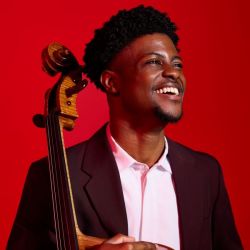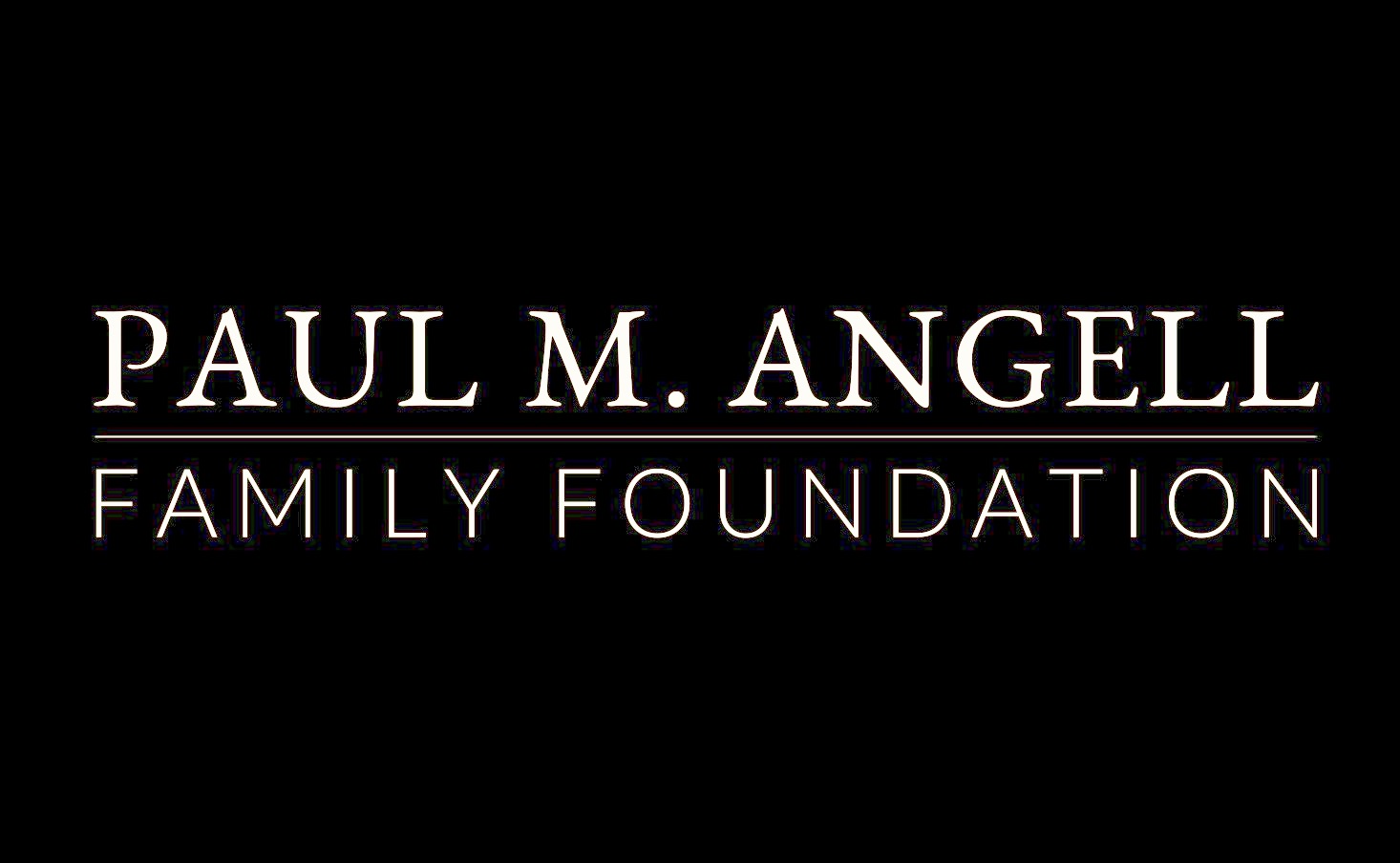Sterling Elliott, cello
Elliot Wuu, piano
Location: University of Maryland Baltimore County
Sterling Elliott, a recipient of the 2021 Avery Fisher Career Grant and the youngest ever winner of the National Sphinx Competition, makes his Baltimore Debut with award winning pianist Elliot Wuu. New York Concert Review praises Elliott’s “perfect intonation, style, and total involvement.” Opening with Bach’s Suite No. 6, the recital features Mendelssohn’s Second Cello Sonata, an ebullient work inspired in part by Bach.
Venue: University of Maryland Baltimore County
Suggested Donation: $10; General Seating

Sterling Elliott
Acclaimed for his stellar stage presence and joyous musicianship, cellist Sterling Elliott is a 2021 Avery Fisher Career Grant recipient and the winner of the Senior Division of the 2019 National Sphinx Competition. Already in his young career, he has appeared with major orchestras such as the Philadelphia Orchestra, the New York Philharmonic, the Boston Symphony, the Cleveland Orchestra, the Los Angeles Philharmonic, the Detroit Symphony and the Dallas Symphony, with noted conductors Yannick Nezet-Seguin, Thomas Wilkins, Jeffrey Kahane, Mei Ann Chen and others.
In the 2024/2025 season Sterling Elliott debuts with the Atlanta Symphony, Reno Philharmonic, Columbus Symphony, Ann Arbor Symphony, Des Moines Symphony, Winston-Salem Symphony, and returns to the Wilmington Symphony. He joins the Madison Symphony for the Beethoven Triple Concerto with Gil and Orli Shaham and returns to Carnegie Hall with the Orchestra of St. Luke’s led by Louis Langree.
As the YCAT–Music Masters Robey Artist with the London-based Young Classical Artists Trust he will Tour New Zealand in addition to appearances at Wigmore Hall, Hamburg’s Elbphilharmonie, Konzerthaus Berlin, the Concertgebouw in Amsterdam and others. This season he also begins his tenure as a BBC New Generation Artist, and a three-year residency in the Bowers Program of the Chamber Music Society of Lincoln Center appearing with CMLSC at Alice Tully Hall and on tour throughout the U.S.
Sterling has a long history with the Sphinx Organization where he won the 2014 Junior Division Competition, becoming the first alumnus from the Sphinx Performance Academy to win the Sphinx Competition. Last season, Sterling received the Sphinx Medal of Excellence, the highest honor bestowed by the Sphinx Organization.
Sterling is pursuing an Artist Diploma at the Juilliard School under the tutelage of Joel Krosnick and Clara Kim, following completion of his Master of Music and undergraduate degrees at Juilliard. He is an ambassador of the Young Strings of America, a string sponsorship operated by Shar Music. He performs on a 1741 Gennaro Gagliano cello on loan through the Robert F. Smith Fine String Patron Program, in partnership with the Sphinx Organization.
His website is sterlingelliott.com.
"Cellist Sterling Elliott held a full Severance Hall in his grasp." —The Cleveland Plain Dealer

Elliot Wuu
Praised for his "power, speed and finesse of artists twice his age" (Tribune Star), Elliot Wuu has captured audiences with colorful tones, sensitive musicality and emotional depth in his music. Wuu, a Young Steinway Artist, was named a 2018 Gilmore Young Artist, one of the most prestigious award bestowed every two years to two young pianists up to 22 years old. Wuu is a winner of the Salon de Virtuosi 2021 Career Grant.
In the recent years, Wuu has won numerous state, national and international competitions and performed across the globe. In 2015, Wuu won First Prize in the Hilton Head International Piano Competition for Young Artists. In the same year, he also won Second Prize and special Schubert Prize in the International e-Piano Junior Competition, Third Prize and special Mozart Prize in the Cleveland International Piano Competition for the Young Artists, Second Prize and the Best Performance award of a composition by Russian Composers in the Bösendorfer and Yamaha USASU International Piano Competition. He was also the winner of 2017 National YoungArts Competition. In addition, Wuu was named a 2014-2016 Young Scholar of the Lang Lang International Music Foundation and a 2016-2021 MTAC Young Artist Guild (YAG) member, the highest honor awarded to California music students.
Wuu has performed in major venues in the U.S., France, Italy, Germany, United Kingdom, Poland, Romania and China. In NYC, Wuu performed at the United Nations Headquarters in the presence of Secretary-General Ban Ki-moon, at the WQXR Greene Space, and at Carnegie Hall for the Grammy's Salute to Classical Music concert. Other notable concert performances were at the Fondation Louis Vuitton in Paris, Gilmore International Keyboard Festival, Aspen Festival, Ravinia Festival, Hilton Head Bravo Piano Festival and Chopin Foundation of the United States. In 2013, Wuu was selected as one of the twelve young pianists from around the world to participate in the Inaugural Lang Lang Junior Music Camp in Munich, where he performed and worked with Lang Lang in concerts and masterclass. Wuu was also featured on WQXR's Young Artists Showcase and NPR's From the Top radio programs.
After making his debut at age 16 with the Hilton Head Symphony Orchestra performing Rachmaninoff's Rhapsody on a Theme of Paganini, Wuu has appeared as soloist with the Lansing Symphony Orchestra, Columbus Indiana Philharmonic, Terre Haute Symphony Orchestra, Symphony Parnassus, and Arad State Philharmonic in Romania, among many others.
In addition to performing, Wuu has worked with legendary artists as Dame Fanny Waterman, Leon Fleisher, Gary Graffman, and Ruth Slenczynska in masterclasses.
Born in September 1999 in Fremont, CA, Wuu began piano studies at the age of six. Throughout high school years, Wuu was a music scholarship student, studying piano with Yoshikazu Nagai, at the San Francisco Conservatory Pre-College, as well as at the Valley Christian High School Conservatory of the Arts. His previous teachers include Jed Galant and Rose Chen. As a proud recipient of a Kovner Fellowship Award at The Juilliard School, Wuu received his Bachelor of Music degree and continue his studies of Master of Music under the tutelage of Robert McDonald. His website is elliotwuu.com.
Johann Sebastian Bach (1685-1750)
Suite No. 6 for Solo Cello in D major, BWV 1012
View NotesBach was in his early 30s and already enjoyed considerable renown as an organ virtuoso when he accepted an appointment as Kappellmeister, or director of music, to Prince Leopold of Anhalt-Cöthen in 1717. The young composer counted himself fortunate to be in the employ of a “a gracious Prince who both loved and knew music.” It was during his six happy years in Cöthen that Bach composed much of his most beloved instrumental music, including the Brandenburg Concertos, the Sonatas for Violin and Harpsichord, the Sonatas and Partitas for Solo Violin, and, not least, the six Suites for Solo Cello, BWV 1007-1012, which were probably written for one of the cellists in Prince Leopold’s excellent court orchestra.
While Bach’s works for unaccompanied violin were performed in the 19th century, the Cello Suites were all but forgotten until the great Spanish cellist Pablo Casals rediscovered them in the early 1900s. Although presumably intended as technical studies, the suites are neither as challenging to perform nor as musically sophisticated as the violin sonatas and partitas. Yet Bach was a highly proficient string player, and each of these landmark collections combines elements of entertainment and academic music. C. P. E. Bach told his father’s biographer, Johann Nikolaus Forkel, that Bach “understood to perfection the possibilities of all stringed instruments…One of the greatest violinists told me once that he had seen nothing more perfect for learning to be a good violinist, and could suggest nothing better to anyone eager to learn, than the said violin solos without bass.”
Bach’s cello suites (similarly designated “without bass” on the manuscript title page) conform to the classical pattern of the multimovement instrumental dance suite as it evolved in France, Germany, and elsewhere in the late 17th and early 18th centuries. A majestic, fantasia-like prelude served to introduce a varied set of courtly dances, typically including a stately allemande, a vivacious courante, a broadly lyrical sarabande, and a bouncy gigue (jig). To these basic ingredients Bach added a sprinkling of other dances, both newer and traditional, as well as movements of a less dance-like character. In the D-major Suite, for example, the Sarabande is followed by a pair of contrasting Gavottes, played da capo fashion, with the first repeated after the second.
The Sixth Suite is exceptionally elaborate and virtuosic in character. In fact, Bach intended it to be played on a now-obsolete five-stringed instrument─possibly a smaller version of the cello known as a violoncello piccolo─which accounts for the music’s high-lying tessitura, as well as the tricky string crossings required on the modern instrument. Only occasionally is the cellist called upon to play double-, triple-, and quadruple-stops; for the most part the harmonies are implied rather than expressed. As in his solo violin music, Bach ingeniously manipulates the cello’s essentially monophonic (single-voice) music to conjure an illusion of polyphonic complexity. As Forkel observed of the violin solos, Bach “so combined in a single part all the notes required to make the modulations complete that a second part is neither necessary nor desirable.”
© Harry Haskell, 2022
Luigi Dallapiccola (1904-1975)
Ciaccona from 'Ciaccona, Intermezzo e Adagio' for Solo Cello
View NotesOne of Italy’s leading modernists, Luigi Dallapiccola embraced Schoenberg’s innovative twelve-tone method and turned it to his own, often compellingly lyrical ends. His adoption of serial technique in the 1930s coincided with his growing opposition to fascism, as reflected in works like the one-act opera Il prigionero, a Kafkaesque parable of a political prisoner who escapes from the proverbial frying pan into the fire. In 1939, Dallapiccola’s Jewish wife was dismissed from her job as a librarian under Italy’s Nazi-inspired racial laws, despite having converted to Catholicism, and during World War II the couple eked out a precarious existence thanks to his teaching position at the Florence Conservatory. In preparing a modernized version of Monteverdi’s 1640 opera Il ritorno d’Ulisse in patria for the 1942 Maggio Musicale festival, Dallapiccola developed an interest in Baroque forms and procedures that would inform a number of his later works.
The Ciaccona, intermezzo e adagio, commissioned in 1945 by the Spanish cellist Gaspar Cassadó, illustrates the composer’s skill at decanting old wine into new bottles. The first of the three movements, extracted on tonight’s program, offers a modern take on the Baroque chaconne, a variation form based on a repeating pattern known as a ground bass. In this case, the “ground” is a Schoenbergian tone row: the twelve notes of the chromatic scale that the cellist introduces sequentially in the piece’s first four measures. This theme subliminally underpins a series of thirteen variations that unfold in a free, fantasy-like fashion. The Ciaconna hints at traditional tonality—or what Dallapiccola called “polarity”—in the subtle gravitational pull exerted by the low C naturals sounded at the beginning and end. Dallapiccola’s imaginative handling of timbre and articulation is reflected in his performance markings, which range from martellato (hammered) to velato (veiled) and spettrale (spectral).
© Harry Haskell, 2022
Felix Mendelssohn (1809-1847)
Cello Sonata No. 2 in D major, Op. 58
View NotesEven by Mendelssohn’s usual standards of hyperactivity, the early 1840s was a phenomenally busy time. Only in his mid-30s, he was one of the most eminent and widely admired musicians in Europe. The demand for his services—as composer, pianist, conductor, and administrator—was unrelenting. In addition to his principal job as music director of Leipzig’s Gewandhaus concert hall, he regularly commuted to Berlin, where King Friedrich Wilhelm IV had appointed him general music director of the Prussian court, with special responsibility for the performance of sacred music. Moreover, the conservatory that he helped start in Leipzig (along with Robert Schumann) opened its doors in early 1843, and many of his days were taken up by composition and instrumental students. It was chiefly during the summer months that he found time to work on scores like the “Scottish” Symphony, the incidental music for A Midsummer Night’s Dream, and the Violin Concerto.
The fact that Mendelssohn’s brother Paul was an amateur cellist helps explain his special feeling for the instrument. Paul must have achieved a considerable level of proficiency, judging from the musically and technically challenging cello parts of the Variations concertantes for cello and piano of 1829 and the Cello Sonata No. 1 in B-flat major of 1838, both of which were written for him. The D-major Sonata, on the other hand, was dedicated to a cello-playing member of the Polish-Russian nobility, Count Mateusz Wielhorski, a prominent patron of the arts in St. Petersburg. Mendelssohn probably finished the score in the summer of 1843 and gave the first performance in Leipzig on November 18, shortly before he and his family decamped for Berlin.
The exuberant D-major melody that opens the Allegro assai vivace sets the tone for much of the Sonata. In short order Mendelssohn introduces a second subject in dominant A major, and although the music subsequently ventures into darker territory, its confident stride never falters. The Allegro scherzando features two themes of strikingly different characters—a bouncy, scherzo-like tune (played pizzicato by the cello) and a sweetly flowing cantabile melody. The somberly introspective Adagio plays on a similar contrast, this time between slow, measured, chorale-like chords in the piano and the cello’s flexible, animated recitative. The final Molto allegro e vivace revives the good-humored spirit of the first movement, with an abundance of memorable themes, billowing cascades of sixteenth notes, and irresistible momentum.
© Harry Haskell, 2022
William Grant Still (1895-1978)
Mother and Child
View NotesKnown as the “Dean of African American composers,” William Grant Still stood out in the European-dominated world of classical music by virtue of both his outsized talent. A photograph taken in Hollywood in 1948 shows him standing alongside Igor Stravinsky, Erich Wolfgang Korngold, Miklos Rosza, George Antheil, and other luminaries who, like Still, had migrated to Tinseltown seeking to capitalize on their fame as “serious” composers. Seventeen years had passed since the Rochester Philharmonic premiered Still’s “Afro-American” Symphony and twelve since he conducted the Los Angeles Philharmonic in a program of his own music—both firsts for an African American musician. A year later, the New York City Opera would premiere his opera Troubled Island, based on a libretto by Langston Hughes set during the Haitian Revolution. Like his mentor Howard Hanson, Still was fundamentally a neo-Romantic. His goal, he said, was “to elevate Negro musical idioms to a position of dignity and effectiveness in the fields of symphonic and operatic music.”
Raised in Little Rock, Arkansas, Still was largely educated in Ohio at Wilberforce University and Oberlin College. He began his professional career during World War I as an arranger for blues master W.C. Handy. Over the ensuing decades, his growing reputation generated a stream of high-profile awards and commissions, including a piece for the 1939 New York World’s Fair. In 1943, Still rejected a lucrative offer to serve as musical adviser for the star-studded film Stormy Weather, criticizing its depiction of African American life as a crude caricature. Instead, he focused his energy on concert works like the Suite for Violin and Piano, written for the eminent violinist Louis Kaufman. The suite’s second movement, “Mother and Child,” was inspired by a drawing by African American artist Sargent Claude Johnson. Moving smoothly between major and minor modes, Still’s short paean to motherhood—reportedly his favorite among his more than 150 works—is notable for its muscular lyricism and unforced sentimentality.
© Harry Haskell, 2022




